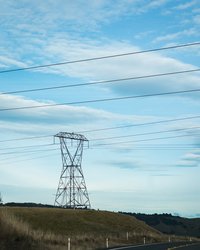
Empowering Reliability: Harnessing Data Science for New Zealand's Electricity Network
Advanced Analytics | Data Quality
The SAIDI, or System Average Interruption Duration Index is a key metric for network reliability performance in the electricity industry. It corresponds to the sum of all customer interruption duration divided by the total number of customers served, offering a comprehensive gauge of service reliability.
Top Energy is a New Zealand-based company specialising in electricity distribution and generation. They own and operate the electricity grid in the Far North District, a region known for its challenging energy distribution landscape. The company faces climate-related challenges, such as severe storms and flooding, across a geographically challenging area and relatively small local population.
The Challenge
Over recent years, Top Energy has experienced higher than expected unplanned SAIDI and reported SAIDI has increased each year. Increasingly challenging weather conditions, which are expected to become even more severe due to climate change, have been a significant factor. Harmonic used data science to help Top Energy highlight the factors that led to increased SAIDI. The project objectives encompassed not only discerning the root causes for the elevated rate but also providing data informed recommendations for improvement.
Leveraging diverse datasets, a comprehensive analysis was conducted, with cross-referencing of meteorological data specific to the region. We wanted to identify actionable insights in key areas including:
→ Analysing features of weather related incidents
→ Investigating how asset condition impacted SAIDI
The Solution
Our approach consisted of consolidating the data to establish a tailored geographical framework. This framework enabled the systematic categorisation of incidents in specific regions. Correlating these incidents with local weather data allowed us to explore the relationships linking incident occurrence to weather variables, including frequency and duration. We also categorised different types of weather conditions and their intensities to allow for precise analysis and nuanced comprehension of their impacts across varied circumstances.
Additionally, we evaluated Top Energy’s existing problem-solving strategies and gauged their efficacy. This assessment facilitated the optimal allocation of resources, ensuring the most efficient resolution pathways were pursued.
The Result
- Enhanced understanding of incidents, highlighting the prevalence of short-duration incidents in SAIDI reports.
- Emphasised the significant impact of weather, contributing to up to a 50% increase in SAIDI metrics, particularly during the winter months.
- Improved comprehension of weather's influence on incident characteristics, with longer durations during heavy rain and higher frequency during strong winds.
- Recognised the distinct effects of incident types; 'lines' incidents were linked to prolonged durations, while incidents affecting ‘poles’ were associated with extended durations, suggesting the need for tailored approaches.
- Revealed that 4 substations account for over half of all SAIDI incidents.
- Considering the development of a predictive model for incidents based on weather forecasts.